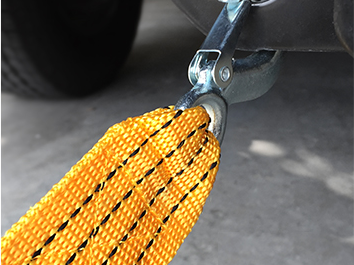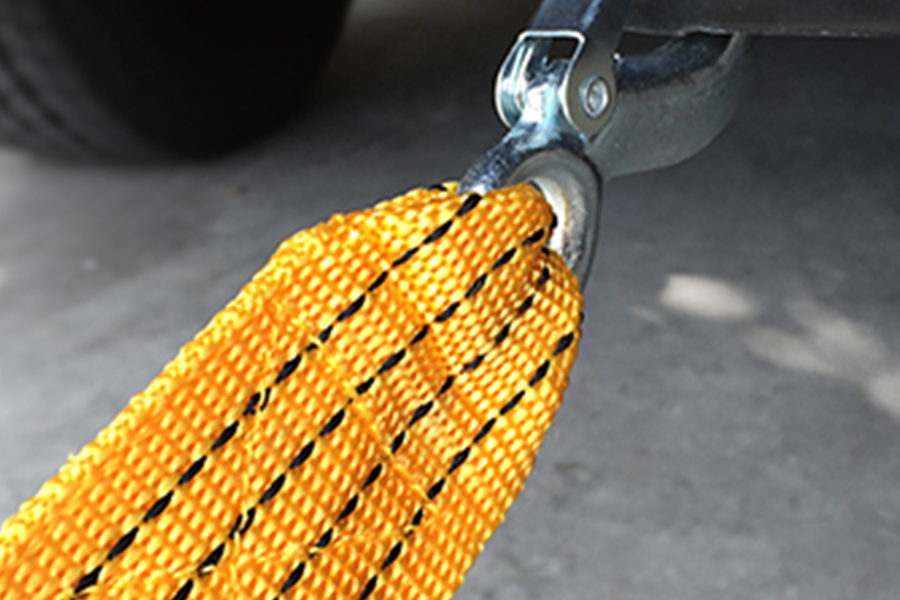Being in the middle of nowhere with your broken-down car is an experience you’ll never want to anticipate. However, in the unfortunate event that it happens to you, you’ll appreciate being prepared and having a backup. In addition to being very uncomfortable that your car presents faults, if it happens in a place that is not safe, is even worse; in a case like this, it would be of great help if you have a tow strap, to improve your situation.
If you do not feel comfortable with the following steps, do not attempt to tow your vehicle by yourself. Please seek professional assistance.
Blikzone has your back, and that’s why in the Classic Roadside Roadside Kit, you’ll find
The Heavy Duty polyester 1‐3/4” x 10 ft. Tow Strap that will help to tow stranded vehicles to a safer place. Rated for 10,000Lb of Break Strength Limit capacity (5000 Lb. Working Load Limit), and terminated with two metal hooks with safety latch for convenience, it is easy to hook up and take off. Lighter, easier to handle prevents damage compared to tow chains.
You have to consider towing a car with a tow‐strap, has significant safety risks and can be subject to complying with relevant Federal, State or Local road rules and regulations. The use of a tow strap should be limited to move a vehicle only a very short distance at low speed, either for safety reasons or where restricted access means other preferred towing options can’t be immediately or easily employed.
Consult YOUR CAR OWNER’S MANUAL for helpful information on how to properly tow your vehicle. Follow these instructions to find where your car’s towing eyes are located. Use ONLY manufacturer approved points for towing to attach the tow strap hooks.
CAUTION: Attempt to connect it anywhere else, could damage the vehicle or cause injuries. Be certain that hook’s open end is facing downward. If your vehicle does not have tow receivers it is recommended to call for professional roadside assistance.
Fully uncoil the strap and attach the strap‘s opposite end hook to the towing car’s hitch/eye.

Verify that the brakes and steering of the towed vehicle are in working order and a person who is licensed to drive the towed vehicle is sitting in the driver’s seat of the vehicle being towed in order to keep control of its brakes and steering during the towing maneuver.
Place the car being make sure the handbrake is released and turn on the ignition so steering lock is released and the four‐way emergency and brake lights will work.
Ensure the strap is not twisted, tangled or knotted; then drive the pulling car smooth and slow forward to take up the slack in the strap (be especially careful when the strap isn’t taut) and avoid sudden movements. Drive the shortest distance possible to move it off the road to the nearest safe place for occupants and vehicle (away of heavy, fast‐moving traffic).
WARNING! MUST READ before use.
Serious personal injury can result from failure to follow these instructions.
This Tow Strap is for TOWING purposes ONLY. DO NOT USE FOR LIFTING OR RECOVERY IN ANY CIRCUMSTANCES. Doing so could result in serious injury or death.
Working load limit (WLL) of 5000 Lbs is the maximum vehicle weight this tow strap can safely handle for towing; allowing a safe margin for the added stress caused by sudden jerking, friction and pulling angle.
Towed Vehicle MUST NOT EXCEED Maximum Working load limit of 5000 Lbs (Webbing Break Limit is 10000 Lbs).
USE EXTREME CAUTION: Stand Clear, if the strap breaks or becomes disengaged it will snap wildly.
Do not use this tow strap in Highways or high‐speed roadways.
Inspect Strap before each use, do not use if strap shows cuts on the face or edge, signs of melting, excessive abrasive wear, knots, holes, snags or any visible damage which causes doubt as to its strength.
It is not possible to warn you about all the potential hazards associated with this product, you must use your own good judgment.

